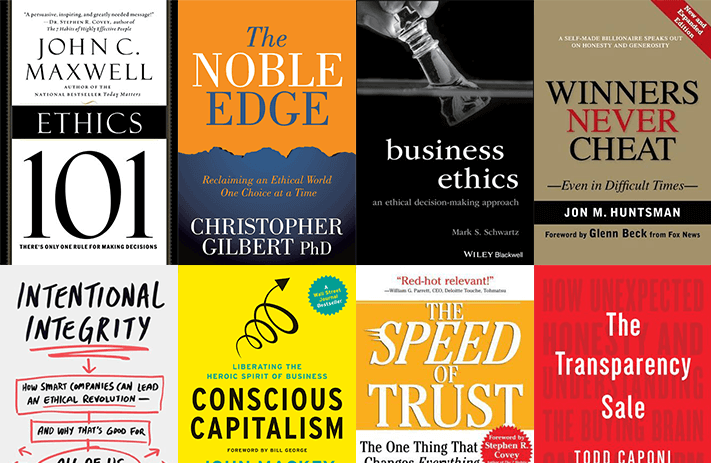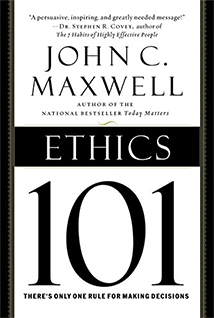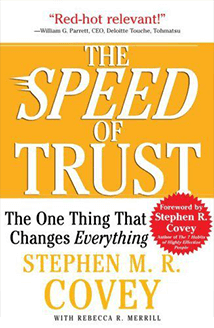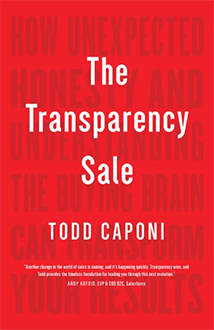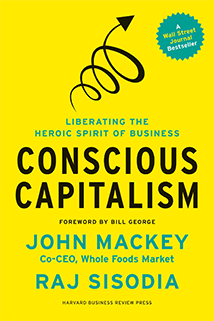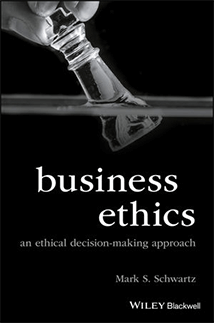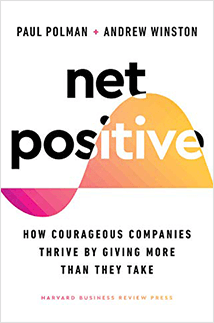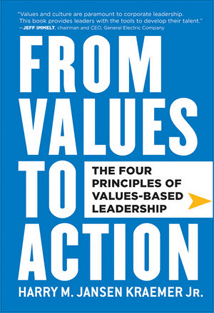The word “brainstorm” can invoke a variety of responses that range from excitement to dread depending on past experience but, when done right, it’s truly an opportunity to foster a creative environment, encourage creative thinking, and bring your team together.
When you think of brainstorming, you probably picture a simple room and people sitting around a table shouting ideas at someone who is quickly jotting them down on a whiteboard. Sure, that is one way to do it, but there are a number of creative ways to brainstorm to help bring out the best ideas from your team.
First, though, let’s take a moment to be critical of your team’s current brainstorming practices because knowing what is going wrong will help to ensure that you can get it right next time.

Red Flags of Brainstorming Sessions
There is nothing more draining on time, energy, and creativity than a bad brainstorming session. Being able to recogninize the red flags is an important step to planning an effective sessions and here are the most common red flags to be conscious of moving forward.
The Unequal Balance of the Conversation
This is obvious, quite literally. It is hard to miss the one person who wants to dominate the conversation and everyone is familiar with the big personalities on the team. Intentional or not, these people can take over the session and aliante more introverted people who will no longer feel comfortable speaking up.
Let’s talk about the anchoring effect, you may not be familiar with the term but I guarantee that you have experienced it. A couple of good ideas are shared and all brainstorming stops to develop the first ideas shared by influential people in the room. While brainstorming can’t go on forever, stopping the flow of ideas too soon could mean that you miss out on all the possibilities that the team can contribute.
Lack of Confidence
This is the silent killer of brainstorming, people shutting down their own ideas before they even leave your mouth because they don’t feel confident or comfortable enough to share their ideas. Lack of confidence doens’t happen over night, it tends to come after prolonged questioning of someones ability or frequent micromanaging. If you team appears to be suffering from lack of confidence, not only is it important to remind them that this is a safe place but also investigate other aspects of their work where there may be someone or some process chipping away at their confidence.
Disconnected and Uninterested team
This is the worst and is usually paired with the previous red flags. It is hard to be interested in a conversation where you can’t get a word in edgewise or the first idea pitched by the team lead was the accepted one. Usually, this results in an awkward silence and stale ideas.
If you recognize that your team appears less than excited at the thought of a brainstorming session, you may have to do some digging to get to the true cause… or maybe you are not using the right brainstorming technique.

Top List of Brainstorming Techniques
There are so many ways to brainstorm that it is impossible to capture them all in one list… but I tried! To make it easier, techniques have been grouped into categories to better filter the ones that will work best for your team.
Traditional Brainstorming Techniques
There are a few techniques that come to mind right away when someone says “brainstorm”. These activities are well known for a reason, they have been shown to be highly effective!
Brainwriting
This is a great way to get introverts to participate because you don’t have to actually talk, think of it as a game of telephone only the message gets better instead of worse.
You start by jotting down a couple of ideas on a piece of paper. After a couple of minutes, you pass the paper to the person beside you and, in turn, receive a piece. In front of you are a handful of ideas you may or may not have had yourself. From here, you elaborate on the ideas of others, inspired by a couple of words on the page. The pages make their rounds and then the team will review them.
Another variation of this technique is called rapid ideation. This technique means that you are writing down ideas quickly, sticking to a specific and tight time constraint forcing people to jot down the first thing on their mind.
Storyboarding
While usually a technique used by visual creators of TV shows, movies and other visual media, it can be very helpful for a team to use this method to brainstorm ideas. Sticky notes work great for this because you can jot down ideas and rearrange them as you see fit. You can even print out headshots if your ideas involve members of your team or perhaps a new hire. Think logos of clients you are looking to work with or of programs you wish to consider as other possible visuals.
This technique helps the team to see any patterns or larger themes that may be missed in more text-heavy brainstorming methods.
Round-Robin Brainstorming
Tried and tested, most people are familiar with round-robin brainstorming. This technique is great for larger groups and ensures that everyone can contribute to the discussion, not just those who speak the loudest.
Sitting in a circle, the team each receives an index card. From here, they are instructed to write down an idea and past it to the person on their left. When you receive a card, you can elaborate on the idea of your neighbour. The cards make their way around the circle at least once so that every idea ends up with the feedback and elaboration of each participant.
While similar to brainwriting, the key difference is that round-robin brainstorming focuses on just one idea as opposed to many. This method is fantastic for co-creating but also inspires others with ideas that they likely haven’t considered.
Popcorn Brainstorming
Popcorn anyone? Just like that tasty bag of salty goodness in the microwave, this technique expands with the input of energy and results in a real treat. Popcorn brainstorming is much like round-robin only that you contribute vocally. The facilitator makes a statement or asks a question and each person has one minute to contribute their thoughts or ideas out loud.
Popcorn brainstorming may be stressful for the more introverted people on your team and is not great if your team is suffering from low confidence. Be sure to consider those factors if this is a technique you wish to try.
Word Banking
Word banking invites the team to submit words that are relevant to the idea or problem. A word bank can be big or small but will ultimately contain a list of words that can be moved around and connected in ways to provide a new perspective on a topic or problem.
This technique works well because the words can be used for a number of other activities such as marketing and SEO.

Using Imagination and Scenarios for Brainstorming
Sometimes, these brainstorming techniques can be a hard sell for more serious folk but their benefits cannot be denied. Creativity is great for breeding even more creativity.
Wishing
This is exactly what it sounds likes. Remove every possible constraint: time, money, resources… all of them, gone. Ask your team how they would solve a problem or develop an idea if there were no boundaries at all. This can take a while to get rolling because the idea of there being no boundaries is so far out there and our brains have likely not visited that realm since we were children.
Capture this list of ideas and tweeze out some favourites. At this point, you can start to slowly return your team back to reality and impose reasonable boundaries but continue to investigate what components, themes, or ideas from these wishes may actually be attainable. Think of how ideas may be scaled down or implemented under more reasonable circumstances.
Figure Storming
What would Steve Jobs do? What would Brene Brown do? What would Jim from finance do?
This method involves picking someone who is not in the room, who people like and trust and putting yourself in their shoes. This could be a celebrity, the CEO of the company, or even the friendly office custodian. It certainly helps creativity to put words in someone else’s mouth, especially if it is something that you have never and likely will never meet but whose personality you are familiar with.
This activity helps people feel more comfortable sharing ideas because they are sharing them as someone else.
The Paper Clip Method
This is a fun one and leaves lots of room for creativity and even humour! The idea is that you have a simple item, like a paperclip, and instruct each team member to think of alternative ways that you can use that item. This is a great way to get the creative juices flowing while also having a bit of fun.
The item itself is irrelevant, the whole purpose of this activity is to get people comfortable with the idea of being creative.
Eidetic Image Method
This method is based on the ability to visualize a solution or idea in your mind. It’s directed by a moderator who starts by asking the team to close their eyes and visualize their response to the moderators questions with their eyes closed.
Think of a team designing a new computer chair for office workers. The moderator may have questions like:
- What colour do you imagine this chair to be?
- What kind of features will this chair have that are not currently on your existing chair?
- What is the size of this chair?
You get the idea. Keep asking questions until there is a clear picture in the minds of the team. Survey the team to get the picture out of their mind and see how it compares with others.
This technique works better when it comes to enhancing something that already exists as opposed to designing something new. Having a foundation to build and improve on.
Brainstorm Acronyms
Everyone loves an acronym, right? Here are two that you should know when it comes to brainstorming.
S.C.A.M.P.E.R.
This is a long one but hang in there because it is a great technique for brainstorming! The word “scamper” means to move or run quickly, usually with excitement, a relevant word for a brainstsorming activity. Ideally, this technique is used to improve upon an existing idea or product by testing out different scenarios and looking at it with an exciting new perspective. The acronym is broken down like this:
Substitute: What would happen if we substituted “X” for “Y”?
Combine: What would happen if we combined “X” and “Y”?
Adapt: What would need to change to adapt to a new scenario, environment or context?
Modify: What could we modify to improve this idea or product?
Put to another use: What other uses could this project or idea have?
Eliminate: How could we simplify it?
Reverse: How could we reorganize this idea or project to work differently or better?
Each question digs a little bit deeper and forces to the team to consider new possibilities and even new elements of an existing idea or product.
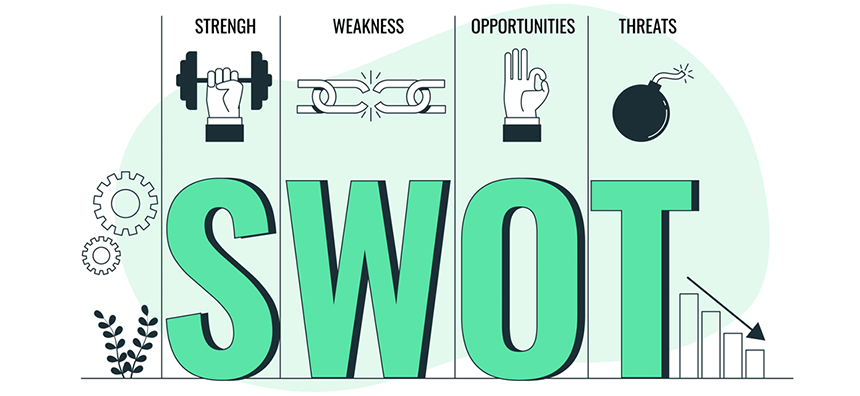
S.W.O.T
Did you really think there would be a brainstorming list without a S.W.O.T analysis? This is certainly one of the better-known techniques and is essential in business development especially but has other implications and uses. S.W.O.T stands for:
Strengths: What are you doing well?
Weaknesses: What areas can be improved upon?
Opportunities: What area can you take advantage of or are available?
Threats: What could negatively impact your idea?
This activity puts you in problem-solving mode and takes into account the competition or potential threats to your idea. It’s also a great add on to the brainstorming session once an idea has been more fully realized.

Digital Brainstorming
Brainstorming is a different ball game when your team is unable to meet physically but there are a number of ways to engage with a remote team.
Chat Waterfall
Technology is great… when it works. Sometimes, technology can be slow and some people type faster than others.
Enter the chat waterfall!
Using your chat program of choice, divide your team into smaller groups. From there, ask each group to start typing their ideas into the chatbox. Instruct them to not hit “enter” until they are asked to. After a designated amount of time, the group is instructed to hit enter and a waterfall of ideas appears! Continue this with however many groups you have.
This method helps put everyone on a level playing field and ensures that ideas come in at a pace where you can truly appreciate each one.
Brain Netting
To make the best use of this technique, chose a central digital location where you can gather ideas. There are a number of platforms designed for this already, digital whiteboards work great. Start by putting a idea in the center of of the document. From here, people can contributing by typing or using digital sticky notes to add their thoughts and comments. Because you are seeing this on your screen in real time, you can watch ideas develop and contribute wherever you like.
This technique is best for capturing new ideas to be developed later and with other methods mentioned on this list. Brain netting can also be an ongoing activity, leaving the document or virtual whiteboard open for anytime contribution.
Step-ladder Technique
While this technique can also be done in person, it is a great way to make effective use of breakout rooms in your video conferencing apps.
Start with the idea or brainstorming topic. From there, have a moderator or facilitator choose the first two members of your team to discuss the idea for a couple of minutes while everyone else leaves and hangs out in a breakout room. Every couple of minutes, a team member leaves the breakout room and joins the brainstorming session. This happens until everyone is back in the main room.
This is a great brainstorming technique for a medium sized group and gives everyone an opportunity to participate. While it may be a bit nerve wracking to be part of the original two, the idea continues developing with each additional person, everyone leaving a bit of their mark.

Brainstorming by the Numbers
So we shared a couple of great acronyms but there are also some great numerical brainstorming activities that just add up (see what I did there?).
Zero Draft
Start from the beginning… the very beginning.
Write as if you are taking notes for someone who has zero insight at all into your idea and you don’t want to miss any points. The key here is that you don’t worry about format or even spelling, just freely write everything you can possibly think of. People also call this technique a brain dump and is a great activity for an individual to get all their ideas out with the intention of organizing them later.
3-12-3 Brainstorm
Ever heard of Parkinson’s law? It basically says that work will fill the time it is given and that’s important to understand for this next brainstorming method.
The idea is that you start fast, your team has only 3 minutes to generate as many ideas as possible. Once the 3 minutes are up, the team then has 12 minutes to consider the ideas they came up with and try and make sense of them. After 12 minutes of refining, the last 3 minutes are used to present the concept back to the group.
You will be surprised at what can be accomplished in less than 20 minutes and the restrictions encourage people to go with their gut ideas without thinking about them for too long.
1-2-4-All
If you have a larger group, this method is a great one to try out with your team. Starting small with individual team members reflecting on their own about an idea. From here, they pair up with another team member and discuss eachs others idea. That pair then merges with another pair and further expands on the idea.
You can continue doubling the group for all long as you need to and this will vary greatly depending on the size of your team.
6-8-5 Brainstorming
This is another technique that involves quick thinking and boundaries. The idea is to give your team a starting point by asking a question. From there, they can jot down 6-8 ideas in 5 minutes. Remind them that perfection isn’t the goal, just get 6-8 ideas out of your head in a short period of time to refine later, kind of like a brain dump with a time limit.
25/10 Crowd Sourcing
As the name suggests, this technique is great for larger crowds. Start by writing and idea on a index card. With a timer set for a couple minutes, encourage people to walk around the room and exchange cards without looking at them. When the timer stops, each person will have a different idea in their hand. With the new idea in hand, rate it on a scale of 1-5. Repeat this process until each card has a total of 5 ratings. Add up the ratings on each card for a score out of 25. Chose the top 10 scored ideas and use those to influence your brainstorming as they are the most popular ideas among your team.
The 5 Whys
Much like an inquisitive toddler, asking “why” multiple times tends to break down a statement to the most basic elements.
This activity starts with a problem that your team wishes to solve. Make it clear and central because you will be referring to it 5 times. Ask your team why this is even a problem, why does it exist? From there, keep digging deeper by asking “why” another 4 times. This is a great activity to really get to the root of the problem and will help you develop a better solution.

Visual and Creative Brainstorming
For many people, it’s helpful to see the ideas right in front of them or be able to manipulate the medium in real-time. This is where more visual methods of brainstorming come in.
Mind Mapping
Remember food webs from middle school? Mind mapping is similar in that you start with the problem in the center of the map and then branch out trying to identify very specific problems that you are trying to solve. Once this first layer is done, you can take all the minor problems and start picking away are more reasonable-sized tasks as they relate to the idea.
How do you eat an elephant? One bite at a time!
Mind mapping works well because it makes a big problem more manageable, breaking it down into tasks that can then be assigned to the most appropriate people. Whiteboards are fantastic for this but you can also use a number of mind mapping programs like Coggle of Mindly.
Starbursting
No, not the yummy chewy candy but this brainstorming technique is pretty sweet to work with when a team has already narrowed down the idea and is looking for ideas on how to execute it.
Starting with the idea in the center of a physical or virtual whiteboard, create a 6-point start around it. The 6-points each represent a key question: who, what, when, why, where, and how. Once this is drawn, the team can get to work answering the questions as they relate to the idea.
Let’s say you are designing a new office chair like mentioned above, the questions may look like this:
- Who are we designing this chair for?
- What is the motivation to create a better chair when there are many already out there?
- When should we launch the product?
- Why would they choose us over another competitor?
- Where would we find the target audience?
- How do we reach this audience?
Of course, those are not the only questions, there can be multiple questions in each category but it is a good start to get those creative juices flowing.
Group Sketching
Something about asking a group of adults to draw or sketch tends to make people uncomfortable but those who embrace this technique reap the rewards!
Start by asking members of the team to sketch an image that relates in some way to your idea. After a designated amount of time, their page is passed along to the next person who can add or elaborate on the concept. This activity is repeated several times and the final drawings are then brought to the center to discuss.
Much like brainstorming activities that involve passing along a word or sentence for someone to elaborate on, this activity can bring out many new ideas that the original contributor may not have considered. The visual nature of the exercise helps people visualize ideas in ways that words cannot.
Walking Brainstorm
Who says you need to sit around a table to have a good brainstorming session? Make use of a large room and create different areas that people can visit and brainstorm in a couple of different ways. There is no set way to do this but consider:
- Having flip charts in each corner with an idea written on each, having people contribute ideas by writing directly on the paper
- Have certain walls or areas covered in sticky notes and encourage people to rearrange them in ways that make sense
- Have a list of ideas on different tables and encourage people to leave a sticker beside the idea that they like best
There really are a million ways to do this but the key is that there is some kind of physical movement involved.
Change of scenery
Time for a field trip! Seriously, leave your chair, walk out the door and into a different space.
Using coworking spaces is a great way to change the scenery but still have all of the professional comforts handy. Many companies now have memberships at local coworking spaces and give their team an alternate space to be inspired… hard to be inspired by the same four walls all the time.
Fresh air can also do wonders, consider an outdoor session to help inspire your team to share their best ideas.

Alternative Brainstorming Methods
When the typical brainstorming techniques just won’t cut it, consider some of these creative and sometimes backwards methods that actually work!
Thinking Hats
Courtesy of psychologist Edward de Bono, the thinking hats technique is exactly what it sounds like. He suggests breaking down complex ideas into 6 areas:
- Logic – consider the hard and indisputable facts
- Optimism – looking at both the value and the benefits
- Emotion – gut reactions, feelings
- Devil’s Advocate – the opposite of optimism, seeing the potential threats
- Management – overseeing the process and ensuring rules are followed
- Creativity – considering all the possibilities from a new perspective
This method could be made extra fun by actually having actual hats that people can wear. Your team can take turns looking at a given idea and provide perspective based on the hat that they are wearing. This activity can also give people permission to share something that they may feel judged or uncomfortable for sharing, using the hat as a scapegoat.
Reverse Brainstorming
Reverse brainstorming is kind of like starting out wearing the devil’s advocate hat, you start with the problem. The difference, however, is that you then work backwards to think of solutions to the problems that have been identified.
Problems will arise whether you think of them or not so, while this exercise may seem counterintuitive, it’s actually super helpful to be clear on what potential problems realistically exist and how you will react to them if they (or when they) happen.
Questioning Assumptions
This is one case where it is totally okay to make assumptions. This activity can be done independently by assigning the team to list a certain amount of assumptions and then submit them to a central location. The key is to remind the team that it doesn’t matter if they know the assumption to be false, write it down anyway. Assign a team member to go through the list and combine duplicates, noting assumptions that appear multiple times.

Tips to Run an Effective Session
Brainstorming doesn’t just happen, you need to create the right conditions that will enable your team to be creative and really feel comfortable sharing their ideas. Here are the top tips to run an effective brainstorming session, no matter what technique you use!
Set the Intention
You can’t have an effective meeting without an agenda and you can’t have an effective brainstorming session without setting the intention and goals for the activity. Your team will work much better if there is a clear goal for them to work towards and then understand that the end result of their work will look like.
Encourage Wild Ideas
While some of the techniques mentioned above are more conducive to encouraging wild ideas, be sure to remind your team that, in a brainstorming session, no idea is bad. Try suggesting a few wild ideas yourself to give an example as well as permission to share.
Let People Prep
Don’t pop a brainstorming session into the laps of your team without any notice, this will cause unnecessary stress and is inconsiderate of whatever headspace they may currently be in. Make sure that you schedule the session in advance and give any relevant information that your team may need to prepare. Not only will people show up more willing to engage, it also helps them feel more confident when they can prepare even a little bit in advance.
Invite Guests
A brainstorming session doesn’t need to be just your immediate team, new people means new perspective and ideas. This can be a great way to involve other departments in your company or outside expertise.
Create a Supportive Environment
One way to guarantee that a team member will never speak up again is to shut them down in an environment that is suppose to be inclusive. Words can be empty, be sure to have a facilitator who can walk the walk and encourage people to share and express gratitude when they do.
Document Everything
This can look different with each brainstorming technique because some have built in recording (flip charts, sticky notes, index cards, virtual white boards) but the key is to make sure that ideas are captured in some way and available to everyone.
Follow Up
There is nothing worse then attending a great brainstorming session and then hearing crickets. What happened to all those great ideas? Were any of them considered? Was it even worth attending? Of course, not every great idea will fit into the plan for your organization but it is discouraging to not see some kind of outcome from your sessions. Keep the team updated with how the information is used, especially if there was someone who contributed an idea that was later used.
Conclusion
You know you had a good session when people leave the space (physical or virtual) inspired, excited, and feeling accomplished. You want to plan a session that people want to go to, not drag themselves to. Re-read the list and try out a couple new techniques with your team at your next brainstorming session!





















































